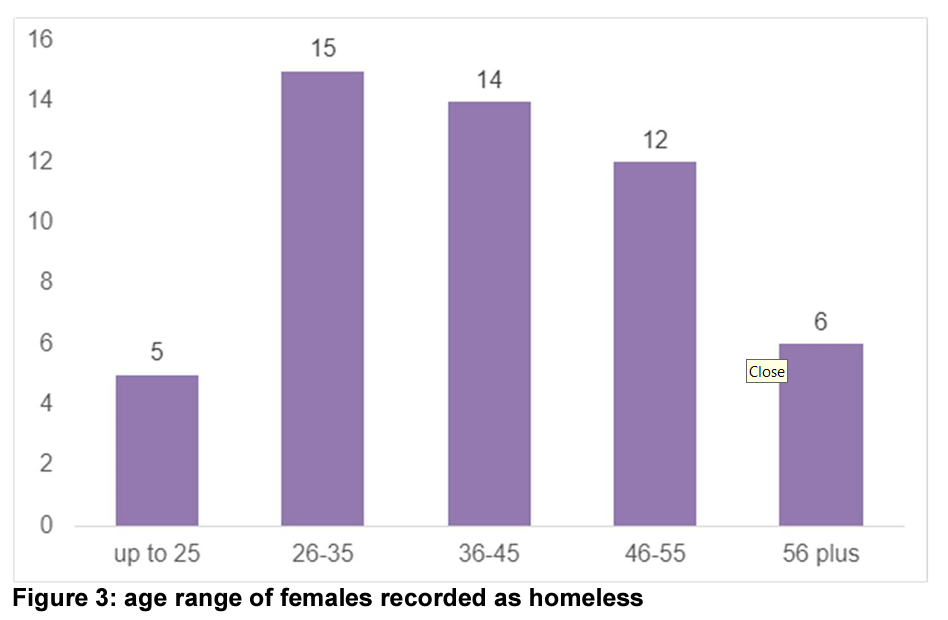


Just under a third of the island's homeless population was in full- or part-time employment during the second quarter of the year, a new report has revealed.
Ahead of World Homeless Day today, Housing Minister Sam Mézec published the 'Homelessness in Jersey Report' for the second quarter of 2024.
The findings – which are drawn together from data from various local organisations – will support future policy design and service delivery in relation to homelessness, and help ensure that appropriate accommodation and support services are in place.
The data in the most recent report spans from 1 April to 30 June 2024.
Express took a look at the key figures...
The report showed that 14% of males were homeless due to substance use as the main reason. Men make up three-quarters of homeless islanders.
Other reasons included mental health problems, a lack of affordable accommodation, a history of offending, unstable employment, family or relationship breakdowns, or physical disability.
For women, the leading reason for homelessness was experience of, or escaping, domestic abuse – which was the main recorded reason in 39% of cases.
In total, 220 islanders were identified as being homeless.
A total of 180 islanders were classified as being "houseless", which meant they were temporarily sleeping in institutions or shelters.
Another 40 lived in insecure housing, for example under an eviction order or with friends or family as a temporary measure.
Fewer than five were experiencing "rooflessness" – commonly known as "sleeping rough" – and another small number were homeless, but without recorded circumstances.
The report struggled to account for islanders experiencing "hidden" homelessness – such as sofa-surfing, when people sleep at friends' houses.
These people risk not thinking of themselves as homeless and therefore are not accessing services, the report said.
The majority (75%) of people experiencing homelessness were male, and 25% were female.
The age range differed by gender – though most were aged 26-65.
Among men, the age range "gradually increases" and peaks between ages 56 and 65.

Most women experiencing homelessness were aged 26-35, and the numbers went down in older age groups.

Most homeless people were long-term Jersey residents.
According to the report, 85% had "entitled" status, 6% had "entitled to work" status (achieved after years' residency) and 6% had "registered" status or their status was unknown.
The report found that 59 homeless islanders were employed in full- or part-time work – accounting for 29% of the island's homeless population.
Another 12 people were retired, and nine were recorded as "other".
The report recorded up to three reasons for homelessness for each person.
The biggest reason for homelessness was substance use, whether alcohol or drugs – which was the main reason for 13% of people.
11% of people were homeless because they were at risk of, had experienced, or had escaped domestic abuse.
Another 11% were homeless because of mental health problems.
For 10% of people, the lack of affordable accommodation was the main reason.
But the difference between men and women was obvious – with men more heavily affected by substance use, affordable accommodation and mental health problems, and women escaping domestic abuse or a breakdown of relationships.
The research also tried to track the journey that islanders took before becoming homeless.
They found that many had lived in the private rental sector (55 people) or with family or friends (another 55 people) before becoming homeless.
Meanwhile, 35 people had left institutions or jail, 20 had left another form of temporary accommodation, 20 had been in the social rented sector, and 15 had been sleeping rough.
A total of 35 people moved into shelters in the second quarter of 2024.
The organisations who contributed to the quarterly report were FREEDA, the Housing Advice Service, the Sanctuary Trust, and the Shelter Trust.
The report found that most homeless people engaged with some agencies and services.
Men engaged mostly with the Alcohol and Drugs Service as well as Adult Mental Health, and women engaged mostly with Jersey Domestic Abuse Support as well as a mix of social services, children's social care services, and the Probation and Aftercare Service.
Engagement and adherence – particularly with rules – had improved at Sanctuary Trust. The charity said they had seen a decrease in the number of residents being asked to leave after not complying with rules.
Whilst the Sanctuary Trust's entry property was operating at full capacity, the charity had some vacancies in its secondary, unstaffed property in St Peter.
The Shelter Trust – which focusses on outreach and resettlement services, helping people into secure, and sustainable tenancies – had to turn away fewer than five people during the quarter.
Comments
Comments on this story express the views of the commentator only, not Bailiwick Publishing. We are unable to guarantee the accuracy of any of those comments.